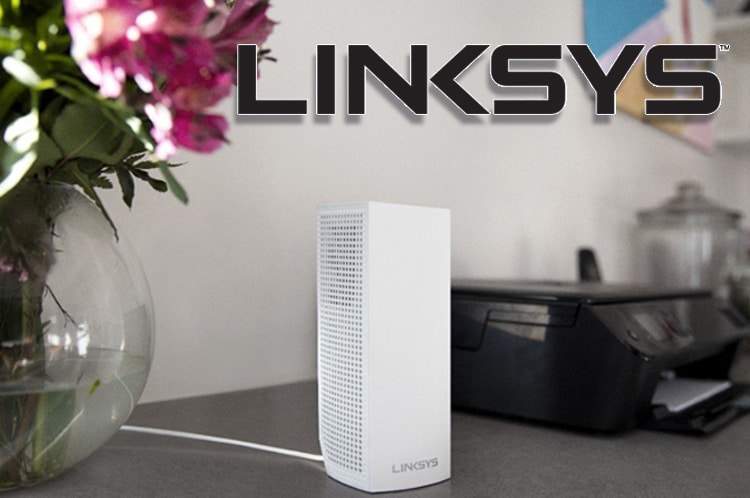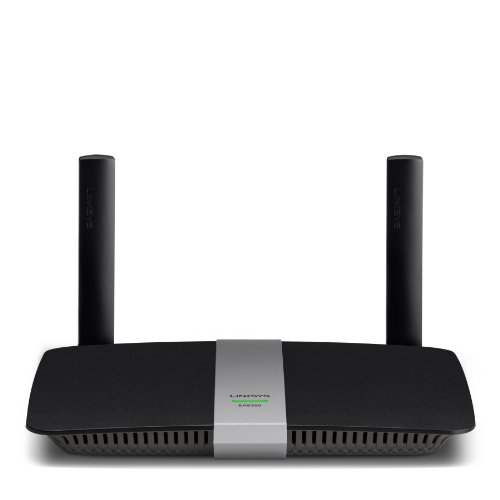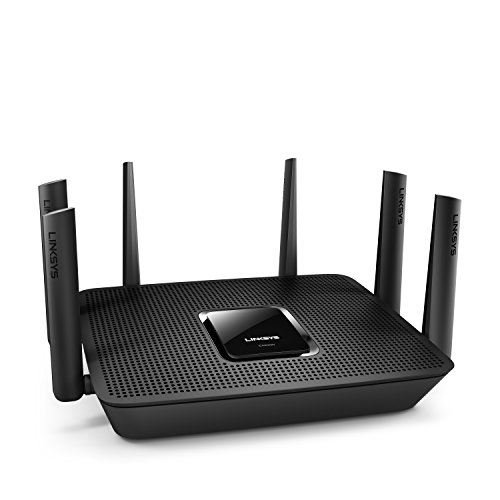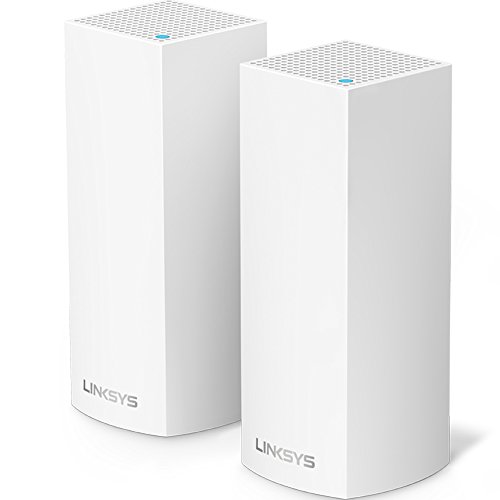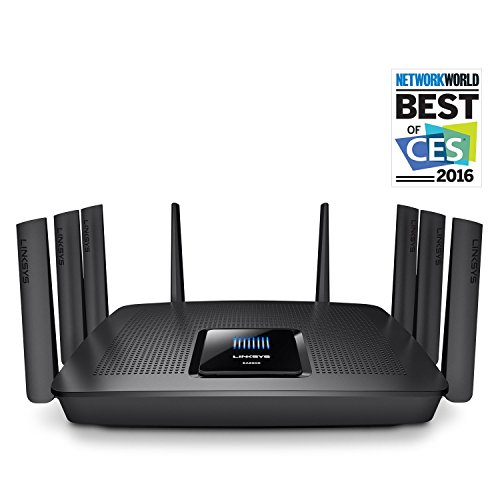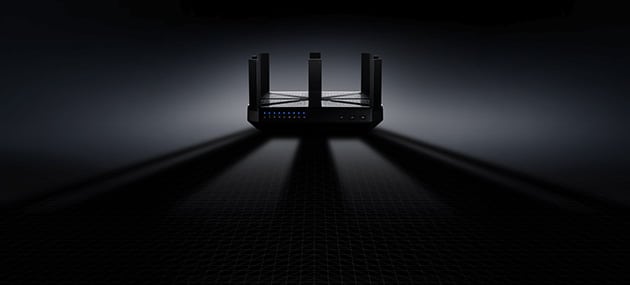Makers of some of the best wireless routers, Linksys is a standout brandname in the router technology sector, and it’s also one of the most venerable. That’s for a simple but very effective reason—the best Linksys routers are among the most reliable and efficient technology in networking. The veteran tech firm makes routers that are at the top of the game for any purpose, whether online gaming and streaming, business, or just for simple entertainment and web browsing.
Best Linksys Routers of 2022
While Linksys routers are all of excellent standard, there is a variety of purposes and price points that will make them suitable for different sets of users. Our team has compiled this buyers guide to the best Linksys routers, complete with reviews that will help make your Linksys router search a litter easier.
1. Best All-Round Linksys Router – Linksys AC1900 Max Stream EA7500
The Linksys Max Stream EA7500 features the Amazon Alexa. It has dual-band Wi-Fi technology offering up to 1,900 Mbps of total performance. The router uses beamforming technology to send a focused Wi-Fi signal to each connected device which increases signal strength and stability. Linksys’ Max Stream 3×3 wireless-AC technology can support three simultaneous data streams which gives faster speeds to each connected device. The router also allows for guest passwords for short-term users.
| Linksys AC1900 Max Stream EA7500 – PROS | Linksys AC1900 Max Stream EA7500 – CONS |
|---|---|
| • Ability to set up guest network. | • Only one USB 3.0 port. |
| • Beamforming technology. | • Confusing configuration. |
Amazon Customer Reviews: 9,804
Average Review Rating: 4.3 out of 5 Stars
2. Best Budget Linksys Router – Linksys EA6350
The Linksys EA6350 can reach a max speed of 300Mbps on a 2.4GHz band and 867Mbps on a 5GHz band. The router’s adjustable antennas allow you to direct signal strength to any area of a home and its beamforming technology sends extra signal strength to online devices for an overall faster network performance.
| Linksys EA6350 – PROS | Linksys EA6350 – CONS |
|---|---|
| • Beamforming technology. | • Middling file transfer speed. |
| • Adjustable antennas. | • Non-removable antennas. |
Amazon Customer Reviews: 9,804
Average Review Rating: 4.3 out of 5 Stars
3. Best Linksys Router for Speed – Linksys WRT AC3200
The WRT3200ACM from Linksys features MU-MIMO technology which allows for fast internet speeds across many devices simultaneously. The Tri-Stream 160 technology doubles the bandwidth on the 5GHz band and pushes the speed up to a crazy 2.6Gbps. The router is open source which means that the it has to option to create a hotspot, set up a VPN or turn the router into a web server..
| Linksys WRT AC3200 – PROS | Linksys WRT AC3200 – CONS |
|---|---|
| • Open Source. | • Expensive for what it offers. |
| • 2.6 Gbps. | • Coverage can be spotty. |
Amazon Customer Reviews: 1,535
Average Review Rating: 4 out of 5 Stars
4. Best Linksys Router for Gaming – Linksys Max-Stream AC4000
The Linksys Max Stream AC4000 tri-band router features six antennas which deliver a powerful signal across a large coverage area. Beamforming technology extends and amplifies the signaal on both the 2.4GHz and 5GHz bands. The router has a quad-core CPU and three offload processors give a maximum speed of 4 Gbps.
| Linksys Max-Stream AC4000 – PROS | Linksys Max-Stream AC4000 – CONS |
|---|---|
| • Beamforming technology. | • Power switch awkwardly positioned. |
| • Max speed of 4Gbps. | • Setup can be confusing. |
Amazon Customer Reviews: 9,804
Average Review Rating: 4.3 out of 5 Stars
5. Best Linksys Router for Streaming – Linksys Max-Stream AC2200
The Linksys Max-Stream AC2200 has a quad-core CPU hardware and three offload processors which work together to power three high-speed Wi-Fi bands that can reach a maximum speed of 2.2 Gbps. The router’s MU-MIMO+ Airtime technology provides each connected device with the same simultaneous signal strength which gives a consistent strong connection to each device. Its four external antennas drive the signal strength across a medium coverage area and the four Gigabit Ethernet ports help drive 10x faster speeds than standard Ethernet ports.
| Linksys Max-Stream AC2200 – PROS | Linksys Max-Stream AC2200 – CONS |
|---|---|
| • Amazon Alexa integration. | • Range isn’t ideal. |
| • Four Gigabit Ethernet ports. | • No OpenVPN support. |
Amazon Customer Reviews: 9,804
Average Review Rating: 4.3 out of 5 Stars
6. Best Linksys Router for Range – Linksys Velop Mesh System
The Linksys WHW0302 Velop Tri-band Mesh Wi-Fi system has coverage of up to 4,000 square feet. The router is compatible with Amazon’s Alexa range of products which allows you to use voice commands to configure your device. Linksys also have a smartphone app which allows you to monitor your router’s performance as well as configure settings such as parental controls and guest networks.
| Linksys Velop Mesh System – PROS | Linksys Velop Mesh System – CONS |
|---|---|
| • Smartphone app. | • Very Expensive. |
| • Compatible with Alexa range. | • No USB ports. |
Amazon Customer Reviews: 1,571
Average Review Rating: 4.4 out of 5 Stars
7. Most Expensive Linksys Router – Linksys AC5400 Max Stream EA9500
The Linksys AC5400 is integrated out of the box to work with Amazon’s Alexa voice commands. The router features eight-gigabit ports for up to 10x faster speed. The 1.4GHz dual-core processor keeps the router working efficiently until up to as many as 12 devices are connected. The 2.4GHz band can reach up to 1,000Mbps Performance on the 2.4Ghz band can reach up to 1,000 Mbps which will allow for increased speeds on older wireless N and G devices. The 5GHz band on this device can reach a huge 4,332 Mbps.
| Linksys AC5400 Max Stream EA9500 – PROS | Linksys AC5400 Max Stream EA9500 – CONS |
|---|---|
| • MU-MIMO technology. | • Expensive. |
| • Alexa integration. | • Large footprint. |
Amazon Customer Reviews: 9,804
Average Review Rating: 4.3 out of 5 Stars
Best Linksys Routers – Buyers Guide
Before we finish up our review of the best Linksys routers, we’d just like to go over a few features and factors you should take into consideration before committing to a purchase.
Size / Design
The size of your router should be taken into consideration when browsing the market. This is not really a deal-breaker, however, if possible you should try to find a router that will fit neatly into your living space, and isn’t too large to fit on a desk or wherever you intend on placing your router. Design wise, your router doesn’t need to be invincible as it’s unlikely that your router will be moved very often. That being said, you don’t want to invest in a product that will break easily.
User-Friendliness
This isn’t too much of a problem nowadays, as most routers are set-up and go, with very little configuration involved. Ideally you want a router that will operate smoothly, and will be easy to use straight out of the box.
Band
Originally, routers operated off a single band which catered for 2.4-GHz frequencies. As traffic increased, a second band was introduced, which interacts with 5-GHz frequencies. This set-up became known as dual-band, with most modern day routers follow this blueprint. Further, there are tri-band routers available on the market, although it’s unlikely your home will need this type of router.
Protocol
Protocol refers to the WiFi Standard of your router. This is basically what ‘type’ of WiFi your router supports. These are generally marked with an 802.11, followed by a letter which indicates what standard of WiFi you’re working with. For more information, there are plenty of resources available online explaining the complexities of WiFi Standards.
Ports
Ports are essential for anyone looking to connect their device to their router via an ethernet cable. While old fashioned, this can significantly relieve pressure on the network, making this kind of set-up useful when you have a number of guests over who are all using the WiFi.
Antenna
When it comes to antennas you’ll want as many as possible, and you’ll want them as large as possible. This will guarantee the strongest signal. In the past router antennas were omnidirectional, meaning signal was broadcasted in all directions at once. Nowadays, top of the line routers feature numerous antennas that broadcast in one direction, which leads to a better signal. These antennas are often adjustable, allowing you to ‘aim’ signal at black spots in your home.
Other Features You May Wish To Consider
MU-MIMO: MU-MIMO, or “Multi user, multiple input, multiple output” refers to a relatively new piece of technology that allows your router to prioritise particular devices in your home, allocating additional bandwidth for better performance, while other devices share the left-overs.
Beamforming: Beamforming is similar to MU-MIMO, although this feature allows the user to direct additional bandwidth to an area of their home, without specifying one specific device.
Guest Networks & Parental Controls: The ability to set up a guest network is useful in that it means visitors to your home can use the WiFi through a specially designated password. This independent network means none of your personal devices or data is affected by other users.
Quality of Service: The Quality of Service feature allows your router to prioritise certain applications, making them run faster by allocating additional bandwidth. This is very useful for people who use heavy applications like games or editing software.
Summary
Before you set out to shop for a new router, we recommend using our buyers guide at the bottom of the post for familiarising yourself with the criteria and features associated with brand new routers. If you applies these criteria to the products reviewed in this post, it will help you to more swiftly narrow down your search and find the best Linksys routers for your requirements.
